Firefighters face cancer risks from harmful chemicals. Here's how they're working to limit exposure
RIO RICO — Frank Granados was training with the Tucson Fire Department when a new firefighting product was introduced at the site. After igniting a pool of JP-4 jet fuel, the crew deployed the product, a type of foam, and extinguished the fire in about 40 seconds, nearly twice as fast as anything they’d used before.
“It put out fire like nobody’s business. Incredible stuff,” said Granados, now a senior advisor for the Rio Rico Medical and Fire District, which serves the town about 15 miles north of the Arizona-Mexico border.
It also smelled better than the protein-based foam they were using before, which had animal blood in it.
After that trial in the 1980s, the department kept both foams on hand, but in Tucson and across the country, Aqueous Film Forming Foam, or AFFF, became the standard for handling flammable liquid fires, known as Class B fires, for half a century.
But across the world, fire districts and air bases are now replacing AFFF because of its high levels of perfluoroalkyl and polyfluoroalkyl substances, or PFAS, a class of manufactured chemicals.
Awareness of their threat to firefighters’ health helped activate statewide cancer screening efforts and changes within Arizona fire departments. The chemicals are also at the center of many occupational cancer research efforts. Arizona scientists are doubling down on exposure science and prevention, and spearheading research that could inform future treatment in the state and beyond.
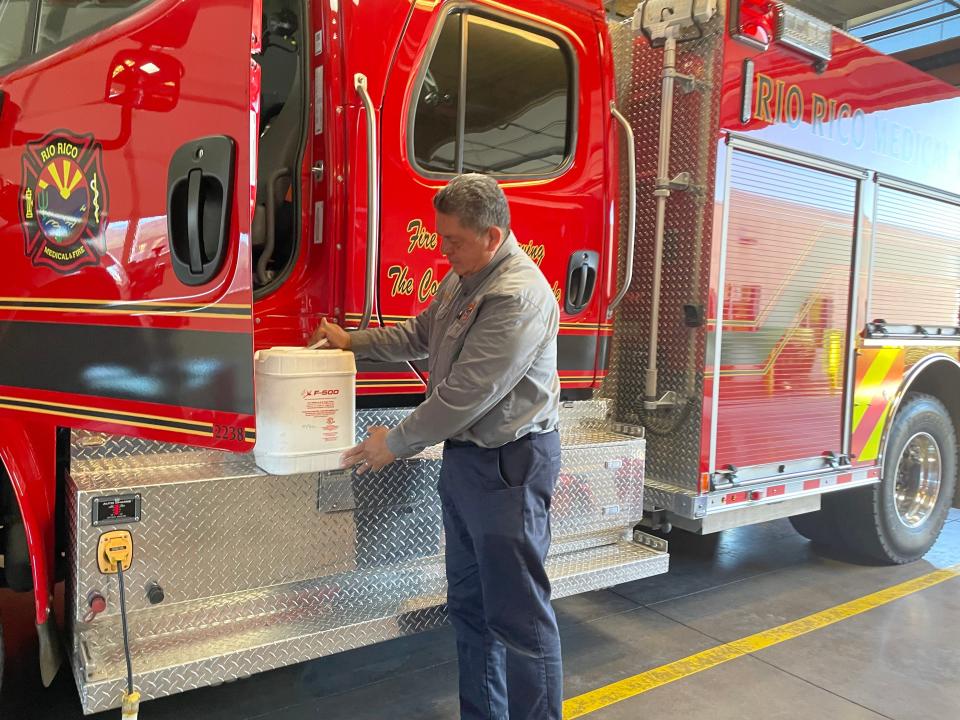
For people in the service, making change happen is personal.
Granados lost most of the colleagues of his first crew to cancer, something that moved him to act and seek a federal grant to replace all AFFF in the Rio Rico Fire District three years ago.
Accepting cancer as “part of the job” is not an option, said Brad Pitassi, Maricopa's fire chief.
“If we continue down the same path that we were in the 80s and 90s with the information that we have now, then shame on us,” he said.
“Our men and women, they deserve every ounce of energy and effort we can put into protecting them like they protect the communities that we serve.”
How chronic exposure can lead to health issues
The cancer risk to firefighters was established long ago, but the connection gained more attention last year when the International Agency for Research on Cancer reclassified the occupation as “carcinogenic to humans,” because of workplace exposure.
How much of the increased cancer risk comes from PFAS is something scientists and oncologists don’t know. There are hundreds of toxic chemicals that can contribute to the disease.
However there is evidence that chronic exposure to these chemicals can cause severe health effects and that firefighters have higher levels of PFAS in their blood than the general population.
Fire departments and scientists in Arizona are collaborating to deepen knowledge on this issue and establish prevention measures.
About nine years ago, Jeff Burgess, a professor and associate dean of research at the University of Arizona’s College of Public Health, started a program with the Tucson Fire Department to identify and reduce carcinogen exposure, taking biological samples before and after a fire, and following crew members’ health, both of recruits and veteran firefighters.
Arizona wildfire updates: Cecil and Still fires burn near Flagstaff
The results were promising, producing new information on the mechanisms behind how exposure can lead to higher cancer risk. Over the first two to three years of a firefighter's career, they could see changes in their gene expression, Burgess said.
The process they had established in Tucson could help answer questions in fire departments across the country, he added.
The team formed a partnership with University of Miami researchers and fire departments, and used a federal grant to expand research to other cities, to create the Fire Fighter Cancer Cohort Study. The long-term goal is following 10,000 U.S. firefighters’ exposure and health, including that of new recruits, over three decades.
Arizona firefighters also urged new research on other fronts. They called out the need, and funding source, to replicate a study that suggests plasma donation can reduce the level of PFAS levels in firefighters’ blood. The research project, led by the new UA’s Center for Firefighter Health Collaborative Research, is still ongoing.
But the main focus is preventing exposure.
AFFF is not the only source of concern about PFAS; protective gear has it too. Experts still don't know how and to what extent the chemicals in the gear get into first responders' bodies, Burgess said.
Firefighters use the turnout gear for extended periods of time, often daily. They train wearing the 75-pound equipment to make sure they are fit and agile to respond to emergencies when lives are on the line.
Fire departments have long had protocols to decontaminate the gear. But fire chiefs say awareness of PFAS exposure made them increase precautions. They establish mobile washing stations to rinse after responding to an emergency, keep extra sets of gear, and load them into the back of the trucks, instead of riding with it.
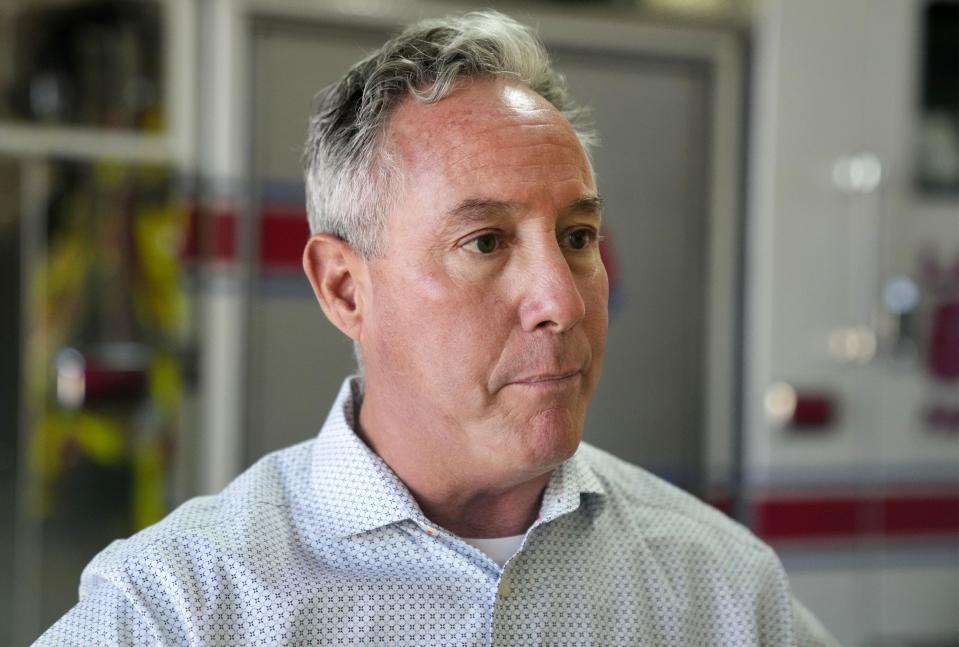
They are also looking at gear alternatives for training, a “heavy welder’s outfit” of sorts, said Scottsdale Fire Chief Tom Shannon
“Something that gives you the weight and the feel of the gear but is basically cotton," he said. "Zero chemicals.”
Surprisingly, there aren't many alternatives on the apparel industry yet, even if the demand and profit opportunity is huge, he said.
Early screening helps detect cancer
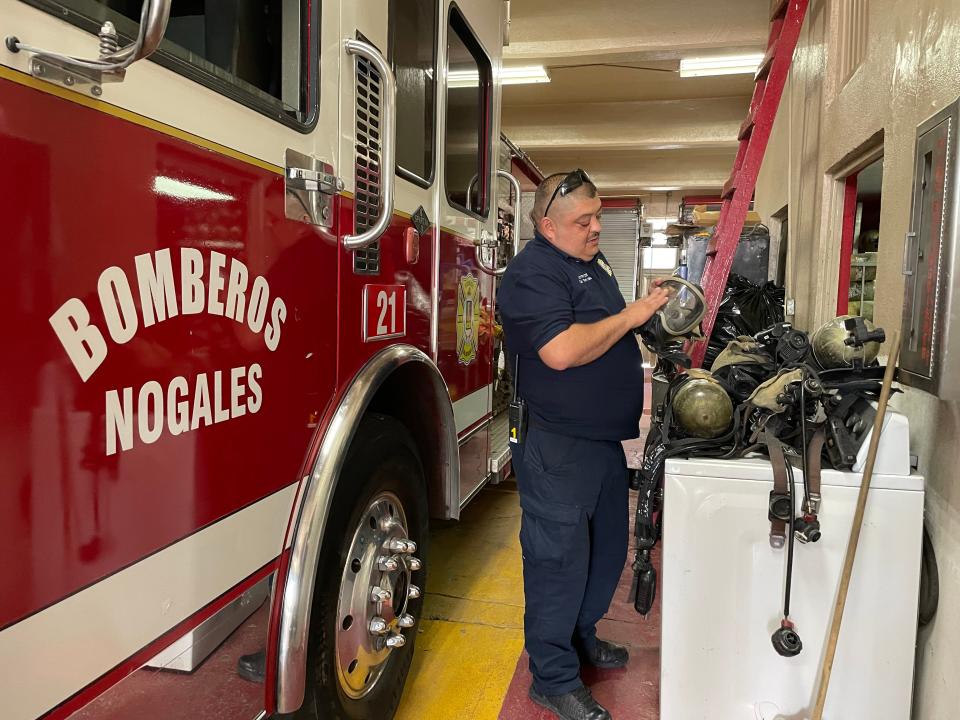
In Arizona, there are many diagnoses of thyroid, kidney and testicular cancers in the fire service, said Vershalee Shukla, a radiation oncologist at Vincere Cancer Center.
The center, based in Scottsdale, runs a free statewide early cancer screening program for first responders. The program started in Phoenix in 2018 and grew to cover most of Arizona in 2020, funded by cities, FEMA grants and workers’ compensation insurance.
Participation is voluntary, but encouraged for members with at least five years of service, with priority to those age 40 and above.
Certain types of cancer seem to have stronger associations with PFAS exposure. Higher levels of PFOS in the blood of Air Force service members were tied to a higher risk of testicular cancer, one study suggests.
"PFAS is actually an endocrine disruptor, so you tend to see issues in thyroid, ovarian cancer, prostate cancer,” said Shukla. These cancers, along with many others, are now included in first responders' work compensation benefits, thanks to 2021 law changes.
Through the early-screening program, Shukla said the center has detected almost 30 cases of kidney cancer and three of thyroid cancer in the last three years.
Pitassi, Maricopa's fire chief, was diagnosed with papillary thyroid cancer in May. A surgeon removed part of his thyroid in June to get rid of the tumor, and Shukla suggested they send a tissue sample to a lab for a PFAS test.
The reading was 920 ng/g for a mix of PFAS.
There are few studies about PFAS concentrations on organ tissue, let alone thyroid tissue. For blood, a concentration of 20 ng/mL PFAS translates into increased health risks that require screening.
Results came from a single tissue sample but support the need for a large-scale study, said Dhimiter Bello, associate dean of the University of Massachusetts Lowell’s College of Health Science, who collaborated with Shukla to study the tissue.
Four Scottsdale fire members were also diagnosed with cancer recently, Shannon said. Three of them worked at the airport, where AFFF is still used, he added.
Pitassi, on the other hand, said he never used AFFF, but did wear turnout gear almost every single day, creating a potential route of exposure.
The eight-inch scar across his neck always reminds him that, because of the high PFAS levels in his blood, he is at higher risk of having another cancer, he said.
“It's a tragic diagnosis," he said. "However, thankfully it's me because I can enact change.”
Foam contaminated soils, water and people
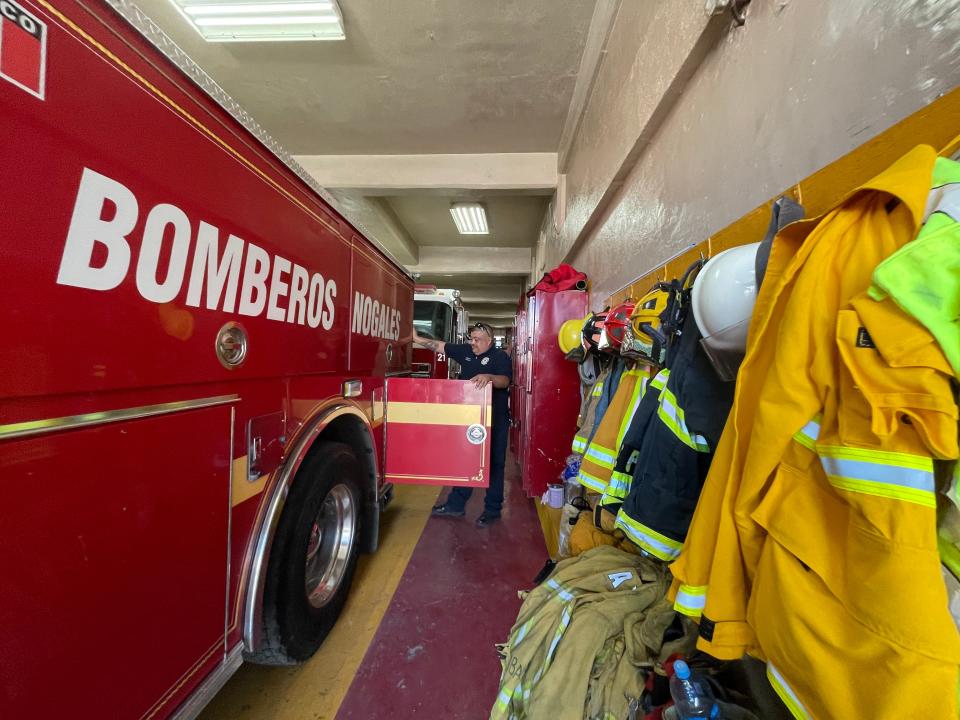
AFFF was, and still is, used to control aircraft and tanker truck fires, along with other emergencies where fuel can likely spread. The foam creates a film that spreads and seals all the burning vapors, suffocating the fire by not allowing more oxygen in.
Every military base, and municipal and international airport had it, as did many fire districts. Effective and fast-acting, it was a lifesaver. But it came at a cost: The foam washed into drains and ditches, contaminating soil and water, and crews took the contaminated gear back to their stations and their homes.
Lawrence Burry, a retired military firefighter living in Peoria, estimates he used the foam easily some 500 times during his two decades of service with the U.S. Air Force.
Unsuspecting, crews also used the diluted product as a degreaser to wash trucks and scrub the floors, he said. Then they’d hose it out into the street and drainage, let their gear dry and use it again.
“What I dislike the most is my children being exposed to it,” Burry said. Sometimes he would go home after shift, wearing the gear, and hug his family.
At some point, the U.S. Air Force instructed firefighters to avoid letting the foam get into streams and lakes because it would kill fish, he said. But there was nothing more to it.
The Department of Defense suspected the product’s toxicity since the 1970s, and in 2000, the EPA warned some PFAS in the foam were persistent, bioaccumulative and toxic, according to official records compiled by the Environmental Working Group.
By law, DOD is required to stop using AFFF by Oct. 1, 2024. Since September, airports have approval from the Federal Aviation Administration to use PFAS-free alternatives but are not obligated to make the replacement.
Military PFAS use: Some homebuyers near Luke Air Force Base can't close and move in because of water contamination
Arizona fire departments are ahead
To protect the health of firefighters and the public, fire departments across Arizona are replacing the foam with a PFAS-free alternative.
Arizona is one of about 12 states that have a program to take back AFFF. The state Department of Environmental Quality invested $406,000 to safely dispose of nearly 10,000 gallons of AFFF across 52 fire departments and replace it with F500, a product the EPA has long used to neutralize oil spills.
Some cities made the change years earlier using part of their budget, grants or money from their cancer mitigation program.
The Rio Rico Fire District took AFFF off its trucks three years ago using FEMA’s Homeland Security grant funds, then received additional support from ADEQ. Granados, who also works at the Santa Cruz County Office of Emergency Management, led the initiative.

He was persuaded by the new product when they lit a bar of magnesium, which heated to 5,000 degrees, and in 45 seconds F500 cooled it enough to be held.
It’s not only that the F500 is PFAS-free, Granados said. The product works on every class of fire and cools the scene so quickly that it can reduce off-gassing and the exposure of firefighters to other carcinogens, he added.
In 2020, Arizona prohibited use of AFFF for training and test purposes, though AFFF is still used in many hazmat and fuel fire emergencies.
Shannon, the Scottsdale fire chief, says his department rarely used it for training because the foam is too expensive. If they have a big fuel spill, they will contain it and use AFFF. Large spills are cleaned and safely disposed of by a contractor.
The fire crews will alert city and state agencies of the AFFF emergency discharges, Shannon said.
But there are no federal or state laws that require them to do so, an ADEQ spokesperson said. There are also no requirements to contain and safely dispose of the product after use.
AFFF is suspected to be the main source of groundwater contamination with PFAS in Arizona.
Sonoran departments lack information about PFAS
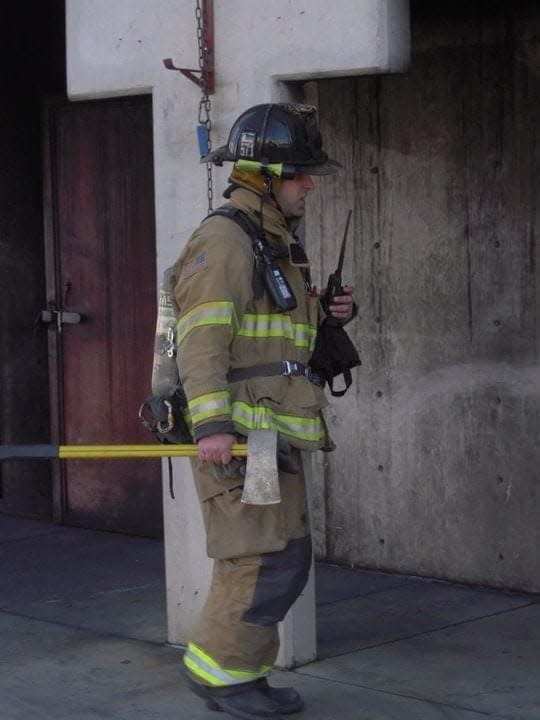
By contrast, in Nogales, Sonora, fire departments haven't been informed by any government agency about the dangers of PFAS contamination.
Legislation in Mexico around the manufactured chemicals only limits imports of certain PFAS, but there are no information campaigns on the increased health risks of being exposed to them.
Gilberto Saavedra, commander and firefighter chief in Nogales, Sonora, said he hadn’t heard about negative health effects coming from the PFAS-laced foam.
Cancer risk is undeniable, especially as construction materials and homes have an increasing number of toxic chemicals that first responders are exposed to, he said. Crews always respond to fires using protective equipment and respirators, but foam and gear has not been on their list of concerns, he added.
They have some AFFF, at 6% concentration, most donated by fire stations in Arizona.
PFAS contamination: Not just Luke: Water in 9 other Arizona places has tested high for firefighting foam toxins
Crews seldom use the foam, it's too expensive and they cannot afford it, said Lt. Cesar Ramón Vélez, who is in charge of the downtown fire station. Stations run on donations, earnings from first responder training for companies and fees from license plates, but receive no budget from the city or county, he said.
They don't use it on all car fires. Only when there are large fuel spills will they use AFFF to stop the fire from running “in streams,” he added.
The border communities are connected in many ways. A dumpster fire a couple of months ago a mile south of the Arizona border blanketed nearby communities with smoke, said Granados.
Stormwater and sewage from the border city flows northward into Arizona through the International Outfall Interceptor, the cross-boundary pipeline, and into the international water treatment plant and washes.
AFFF could also get into stormwater or wastewater and make it across the border, Granados suggested. So far that is unknown. The international wastewater treatment plant does not test for PFAS.
Cultural changes are needed
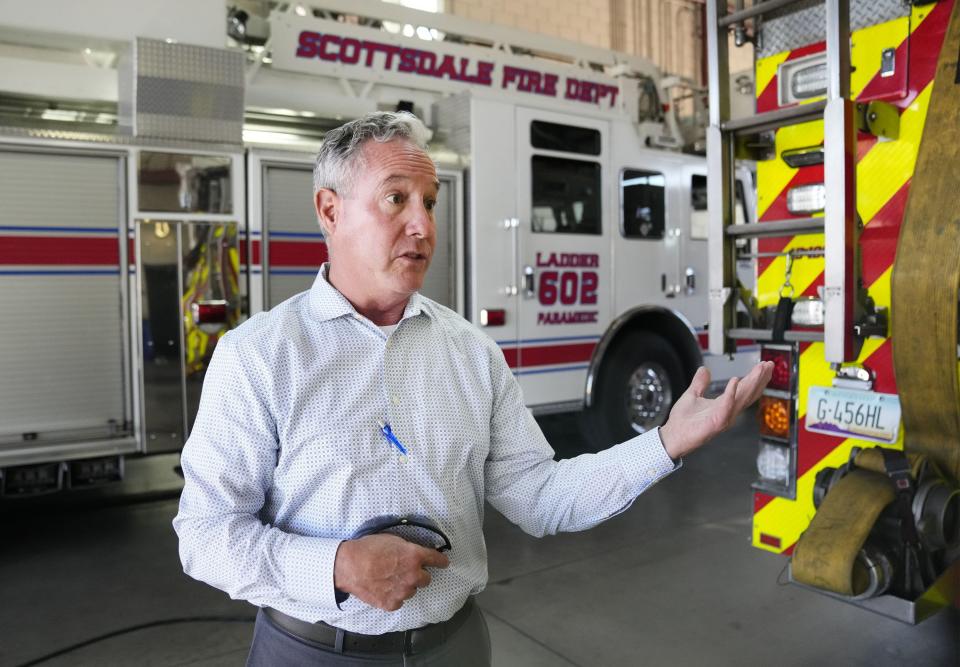
Putting new prevention measures in place has not been easy. Even replacing AFFF for F500 was a steep slope at first.
“Change in the fire service is really voodoo,” Granados said. “The fire service is 200 years of tradition unhampered by progress, because that's the way we've always done it.”
Arizona fire chiefs say it will take more than prevention measures to address PFAS exposure and the high rates of cancer risk the crews face.
Fire departments have made progress on changing protocols and behaviors around turnout gear, using it less often, taking it off with precautions and decontaminating it after shift.
“We have firefighters that are more aware, and the old philosophy of dirty gear as a sign of valor," Pitassi said, "we're not accepting that anymore.”
Shannon said much of the exposure crews go through is unnecessary, and departments will need to change how they fight fire.
There is a slew of toxic chemicals, including PFAS, that transform with fire and that firefighters breathe and absorb when they walk into a burning building. It’s like every fire was “a hazmat scene,” Shannon said.
He believes there needs to be a shift on what firefighters risk and for what.
There is a “cultural ethos” that makes firefighters run into buildings, but once there is no one in harm’s way inside, they should stop doing so, Shannon said. It's an unpopular opinion, he admitted.
“We have to stop exposing our firefighters to things that are lost,” he said.
Clara Migoya covers environmental issues for The Arizona Republic and azcentral. Send tips or questions to clara.migoya@arizonarepublic.com.
Environmental coverage on azcentral.com and in The Arizona Republic is supported by a grant from the Nina Mason Pulliam Charitable Trust. Sign up for AZ Climate, our weekly environment newsletter, and follow The Republic environmental reporting team at environment.azcentral.com and @azcenvironment on Facebook, Twitter and Instagram.
You can support environmental journalism in Arizona by subscribing to azcentral.com today.
This article originally appeared on Arizona Republic: Firefighters and scientists collaborate to reduce PFAS exposure

